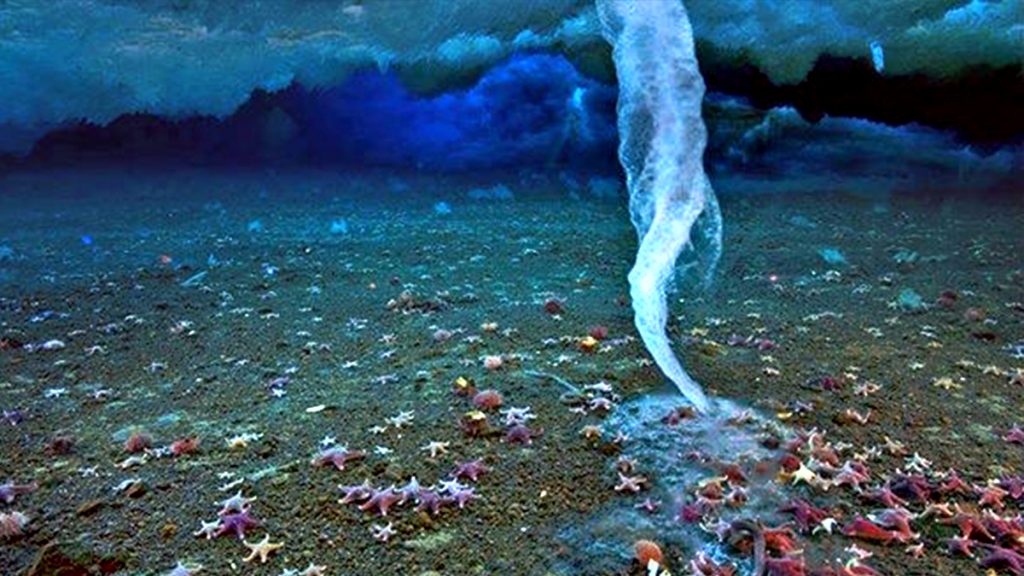
Imagine a giant column of ice that freezes everything it comes in contact with. Well, this isn’t the stuff of nightmares or doomsday films; this strange phenomenon is very real.
Brinicles — also known as “ice stalactites,” or fittingly, “icy fingers of death” — are hollow tubes of ice that surround a plume of salt water and grow downward towards the ocean floor. They form deep below the frigid waters of the Antarctic and Arctic oceans.
When polar ice freezes, salt and other impurities are forced out and become trapped in crevices within the ice. When that ice eventually cracks, it releases extremely concentrated brine (super salty water), creating a flowing underwater “stream.” Since salt water has a much lower freezing temperature than fresh water, this flow of water is extremely cold and dense, which makes it sink to the bottom. On its way down, the icy stream freezes the water around it, creating a growing tube of ice.

The resulting formations can be beautiful and otherworldly:
“They look like upside-down cacti that are blown from glass, like something from Dr. Suess’s imagination. They’re incredibly delicate and can break with only the slightest touch,” Oregon State University professor Andrew Thurber told Wired.
But brinicles have a dark side, as well. Under certain conditions, they can slowly envelop marine creatures like starfish and sea urchins, trapping them inside the ice and eventually freezing them to death.
“In areas that used to have the brinicles or underneath very active ones, small pools of brine form that we refer to as black pools of death,” said Thurber.
These odd formations weren’t discovered until the 1960s, so there is still a lot to learn. Interestingly, some scientists believe that life on earth may have originated from such icy tentacles and that they may even provide the conditions appropriate for life on the moon and other planets.




